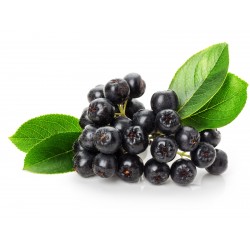Menu
-
MenuGeri
- Home
-
Kategoriler
-
-
Kategoriler
-
Sebze tohumları
-
Ülkelere Göre Çeşitler
- Ermenistan'dan çeşitler
- BH'den Çeşitler
- Hırvatistan'dan Çeşitler
- Fransa'dan Çeşitler
- Almanya'dan Çeşitler
- Yunanistan'dan Çeşitler
- Macaristan Çeşitleri
- Hindistan'dan Çeşitler
- İtalya'dan çeşitleri
- Japonya'dan Çeşitler
- Kuzey Makedonya çeşitleri
- Peru Çeşitleri
- Rusya'dan Çeşitler
- Sırbistan'dan Çeşitler
- Slovenya'dan Çeşitler
- İspanya Çeşitleri
- Tayland çeşitleri
- Türkiye'den Çeşitler
- ABD'den Çeşitler
- Domates tohumları
- Mısır tohumları
- Kabak ailesi
- Fasulye ailesi
- Salatalık tohumları
- Dolma biber tohumları
- Havuç ailesi
- Soğan ailesi
- Marul tohumları
- Patates ailesi
- Lahana ailesi
- Turp tohumları
- Pancar ailesi
- Karpuz tohumları
- Kavun tohumları
- Karnabahar tohumları
- Ayçiçeği ailesi
-
Ülkelere Göre Çeşitler
- Meyve tohumları
- Acı biber tohumları
- Tıbbi bitki tohumları
- Tırmanma bitki tohumları
- Ağaçlar - Çalı tohumları
- Palmiye tohumları
- Süs bitkileri tohumları
- Tütün tohumları
-
Sebze tohumları
-
-
-
-
- YENİ ÜRÜNLER
- Hesap oluştur
- Teslimat - Ödeme
- FAQ
Last Product Reviews
Out of the two seeds, one germinated and the other one was dead and floatin...
By
 Riikka H on 07/03/2024
Riikka H on 07/03/2024
Verified Purchase
170 adet ürün var.
Sıralama ölçütü:
Toplam 170 üründen 31-45 arası gösteriliyor

Dev bitki (dev meyveli)

Bosna Hersek'ten Çeşit

Soğuğa ve dona dayanıklı bitki
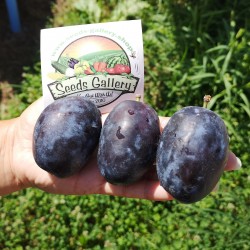
Dev Bosnalı Erik Tohumları...
Fiyat
€2,55
(SKU: V 197 BS)
Seeds Gallery EU,
5/
5
<h2><strong>Dev Bosnalı Erik Tohumları (Prunus domestica)</strong></h2>
<h2><span style="color: #ff0000;" class=""><strong>5 (6,5g) tohum paketi için fiyat.</strong></span></h2>
<p>Bu çeşit Bosna'dan ve hastalıklara çok dayanıklıdır. Bu eriğe tesadüfen bir çiftçinin bahçesinde rastladık ve bu çeşidin hem büyüklüğü hem de tadı karşısında hemen şaşırdık.</p>
<p>Ne yazık ki, sahibi çeşidin adının ne olduğunu bilmiyordu, sadece bu erik çeşidinin büyük büyükbabası tarafından dikildiğini ve o zamandan beri bu erik düzenli olarak saklandığını ve dikildiğini ve bu çeşidin yayıldığını nasıl söyleyeceğini biliyordu. ve olabildiğince çok korur.</p>
<p>Ona bu eriğin kışı ve düşük sıcaklıkları nasıl tolere ettiğini sorduk ve köylerindeki sıcaklığın eksi 24 santigrat dereceye düştüğünü ve bu erik için sorun olmadığını söyledi.</p>
<p>Meyveler gerçekten çok büyük ve meyve başına ortalama 70 ila 85 gram ağırlığındadır.</p><script src="//cdn.public.n1ed.com/G3OMDFLT/widgets.js"></script>
V 197 BS (6,5g)


Soğuğa ve dona dayanıklı bitki

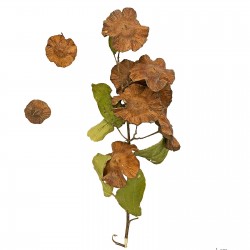
Kudüs diken , İsa'nın diken...
Fiyat
€1,55
(SKU: T 86)
Seeds Gallery EU,
5/
5
<!DOCTYPE html>
<html>
<head>
<meta http-equiv="Content-Type" content="text/html; charset=UTF-8" />
</head>
<body>
<h2><strong>Kudüs diken , İsa'nın diken Tohumu (Paliurus spina-christi)</strong></h2>
<h2><span style="color: #ff0000;"><strong>10 tohum paketi için fiyat.</strong></span></h2>
<p><i><b>Paliurus spina-christi</b></i><span> </span>, yaygın olarak bilinen<b><span> </span>Kudüs diken</b><span> </span>,<b><span> </span>çelenk diken</b><span> </span>,<b><span> </span>İsa'nın diken</b><span> </span>veya<b><span> </span>dikenli taç</b><span> </span>, bir türdür<i><span> </span>Paliurus</i><span> </span>özgü<span> </span>Akdeniz bölgesi<span> </span>ve güneybatı ve merkez<span> </span>Asya<span> </span>dan,<span> </span>Fas<span> </span>ve<span> </span>İspanya'da<span> </span>doğu<span> </span>İran<span> </span>ve<span> </span>Tacikistan<span> </span>.</p>
<p>Bu bir olan<span> </span>yaprak döken<span> </span>çalı<span> </span>veya küçük<span> </span>ağaç<span> </span>boyunda 3-4 m büyüyor. Sürgünler ile,-zagged zig olan<span> </span>yaprak<span> </span>ve iki<span> </span>stipular<span> </span>dikenler<span> </span>her kıvrım dışında (düz bir, bir kavisli).<span> </span>Yapraklar<span> </span>bütün bir marj ile, parlak yeşil, 2-5 cm uzunluğunda ve 1-4 cm genişliğinde, ovaldir.<span> </span>Meyve<span> </span>dairesel kanat 2-3.5 cm çapında ortalanmış kuru odunsu nutlet olup.</p>
<p>Adı dikenli dalları yapmak için kullanıldı eski bir efsaneyi yansıtan<span> </span>dikenli taç<span> </span>yerleştirilen<span> </span>İsa<span> </span>Çarmıha gerilmesinden önce başının.<span> </span><i>Ziziphus spina-christi</i><span> </span>, Topukçayı hünnap, ayrıca dikenli taç için kullanılan olarak tanımlanır.</p>
<p>Bir süs merakı olarak görülür ve Fiji gibi yelpazesini yayma, bazı bölgelerde yetiştirilir.</p>
<p><strong>Şifalı bir bitki (şifalı bitki) olarak, alkaloidler ve tanenler içeren ve çoğunlukla anti-enflamatuar ve antiseptik, antispazmodik, balgam söktürücü, büzücü ve idrar söktürücü özellikleri ile takdir edilen çalı meyvesi kullanılır.</strong></p>
<p><strong>Galen bunu mesane taşları için tavsiye etti. Kurutulmuş meyvenin kaynatma maddesi (1 çorba kaşığı / 500 ml su, 10 dakika kaynatın ve süzün) öksürük, astım, ishal, hipertansiyon, iltihaplanmanın kanını temizlemek için tüketilir. Genel keten tohumu (Linum), ıhlamur (Tília cordáta), prímula véris, Plantágo major, Salvia officinalis, Malva sylvestris ve astım akut) bronşit ile mükemmel bir şekilde birleşir. Deforme edici artritle savaşırken kalın bağırsak üzerinde müshil etkisi olduğu düşünülmektedir - bu yüzden genellikle yaşlılar tarafından tüketilmektedir. Dışarıdan antiinflamatuvar etkisi sayesinde özellikle egzama odaklarının tedavisinde yardımcı olduğu görülmektedir.</strong></p>
<p><strong>Not: Bitkinin yukarıdaki sunumu hiçbir şekilde bir tarif değildir. Tesisi kullanmadan önce uzman tavsiyesi gerekli kabul edilir.</strong></p>
</body>
</html>
T 86


Bosna Hersek'ten Çeşit

Soğuğa ve dona dayanıklı bitki
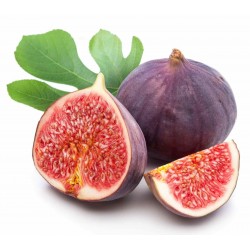
Yabani İncir tohumları...
Fiyat
€1,85
(SKU: V 19 WF)
Seeds Gallery EU,
5/
5
<!DOCTYPE html>
<html>
<head>
<meta http-equiv="Content-Type" content="text/html; charset=UTF-8" />
</head>
<body>
<h2><strong>Yabani İncir tohumları (Hersek'ten)</strong></h2>
<h2><span style="color: #ff0000;"><strong>20 tohumların Paketi için fiyat.</strong></span></h2>
<p>Bu inciri Herzegovina'dan getirdik ve dağlarda vahşi doğada bulduk. Yaşam alanı kayalık ve kuruydu, bu da kötü toprak koşullarına dayanıklı olduğu anlamına geliyor. O kısımda da sürekli kuraklıklar var ve bitkinin fazla su almamasına rağmen büyümesini hiç rahatsız etmedi. Meyveleri diğer incir çeşitlerinden daha küçüktür ve olgunlaştığında koyu mordur. Meyveleri küçük olmasına rağmen çok lezzetli ve tatlıdır. Güvenilir kaynaklardan aldığımız yerde sıcaklığın kışın -15C'ye düştüğünü öğrendik.</p>
<p>İncir çiçeklerinin fark edilmesi zordur çünkü incirin içinde büyürler ve bu tür çiçekler sözde tarafından tozlanır. Yabani incirin meyvelerinde gelişen incir eşekarısı. Uysal ve yabani incir arasındaki fark, uysal incirin sadece dişi çiçeklerle çiçek açması, yabani incirin dişi ve erkek çiçekleri olmasıdır.</p>
<p>Yabani incir, evcil olanlara kıyasla anormal bir oranda büyür.</p>
</body>
</html>
V 19 WF (20 S)


Dev bitki (dev meyveli)

Soğuğa ve dona dayanıklı bitki
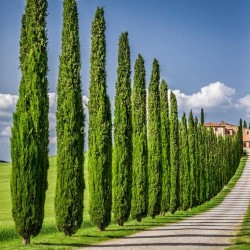
Akdeniz servisi Tohumlar...
Fiyat
€1,75
(SKU: T 16 CS)
Seeds Gallery EU,
5/
5
<h2><strong>Akdeniz servisi Tohumlar (Cupressus sempervirens)</strong></h2>
<h2><span style="color: #ff0000;"><strong>0.5 g (50 tohum) arasında paket için fiyat.</strong></span></h2>
<p><b>Akdeniz servisi</b><span> </span>(<i>Cupressus sempervirens</i>),<span> </span>Akdeniz'in doğusundaki kuzeydoğu<span> </span>Libya, güneydoğu<span> </span>Yunanistan<span> </span>(Girit<span> </span>ve<span> </span>Rodos),<span> </span>Türkiye'nin güneyi,<span> </span>Kıbrıs,<span> </span>Suriye<span> </span>ve<span> </span>Ürdün'ün batısı ve<span> </span>Lübnan<span> </span>gibi bölgelere özgü bir<span> </span>servi (<i>Cupressus</i>)<span> </span>türüdür<span> </span>ama ayrı bir nüfus olarak<span> </span>İran'da da bulunur.</p>
<p>Tür adı olan<span> </span><i>sempervirens</i>,<span> </span>Latincede<span> </span>"her dem yeşil" anlamındaki bir kelimeden gelmektedir.</p>
<p>Önceleri, bu tür iki<span> </span>varyeteye<span> </span>ayrılırdı:</p>
<dl>
<dd>
<ul>
<li><b><i>C. sempervirens<span> </span></i>var.<i><span> </span>sempervirens</i></b><span> </span>(eşanlamlısı,<span> </span><b>var.<span> </span><i>horizontalis</i></b>;<span> </span>Türkçede,<span> </span><b>dallı servi</b>)</li>
<li><b><i>C. sempervirens<span> </span></i>var.<i><span> </span>pyramidalis</i></b><span> </span>(eşanlamlısı,<span> </span><b>var.<span> </span><i>fastigiata</i></b><span> </span>ya da<span> </span><b>var.<span> </span><i>stricta</i></b>)</li>
</ul>
</dd>
</dl>
<p>Bugün için ise ikinci varyete, herhangi bir<span> </span>botanik<span> </span>önemi olmayan bir<span> </span>kültivar<span> </span>olarak kabul edilmektedir. Servi mezarlık ağacı olarak da bilinir. Bunun nedeni mezarlıklara bol miktarda dikilmesidir. Batıl bir inanışa göre ölenlerin ruhları bu ağaç sayesinde göklere yükselir. Ayrıca rüzgarı önleyici set etkisi de vardır.</p>
<h2><span id="Kaynak.C3.A7a"></span><span class="mw-headline" id="Kaynakça">Kaynakça</span></h2>
<div class="plainlinks">
<ul>
<li>Dündar, T.; Ayrılmış, N.; Korkut, S. (2000).<span> </span>İ.Ü.Orman Fakültesi odun mekaniği ve teknolojisi anabilim dalı öğretim elemanlarının İ.Ü. Orman Fakültesi Dergis A serisinde 1951-2000 yılları arasında yayınlanmış makalelerinin 50 yıllık dökümü ve değerlendirilmesi.<span> </span><i>Review of the Faculty of Forestry</i>. University of Istanbul. Series A, 50:1 (119-126).</li>
</ul>
</div>
<table class="metadata plainlinks stub" role="presentation">
<tbody>
<tr>
<td><img alt="Taslak simgesi" src="https://upload.wikimedia.org/wikipedia/commons/thumb/f/f3/Pinus_nigra_cone.jpg/30px-Pinus_nigra_cone.jpg" decoding="async" width="30" height="36" srcset="//upload.wikimedia.org/wikipedia/commons/thumb/f/f3/Pinus_nigra_cone.jpg/45px-Pinus_nigra_cone.jpg 1.5x, //upload.wikimedia.org/wikipedia/commons/thumb/f/f3/Pinus_nigra_cone.jpg/60px-Pinus_nigra_cone.jpg 2x" data-file-width="612" data-file-height="726"></td>
<td><i>Pinopsida<span> </span>ile ilgili bu madde<span> </span>taslak<span> </span>seviyesindedir. Madde içeriğini<span> </span>genişleterek<span> </span>Vikipedi'ye katkı sağlayabilirsiniz.</i></td>
</tr>
</tbody>
</table>
<table class="metadata plainlinks stub" role="presentation">
<tbody>
<tr>
<td><img alt="Taslak simgesi" src="https://upload.wikimedia.org/wikipedia/commons/thumb/9/98/Tree_template.svg/30px-Tree_template.svg.png" decoding="async" width="30" height="30" srcset="//upload.wikimedia.org/wikipedia/commons/thumb/9/98/Tree_template.svg/45px-Tree_template.svg.png 1.5x, //upload.wikimedia.org/wikipedia/commons/thumb/9/98/Tree_template.svg/60px-Tree_template.svg.png 2x" data-file-width="48" data-file-height="48"></td>
<td><i>Ağaç<span> </span>ile ilgili bu madde<span> </span>taslak<span> </span>seviyesindedir. Madde içeriğini<span> </span>genişleterek<span> </span>Vikipedi'ye katkı sağlayabilirsiniz.</i></td>
</tr>
</tbody>
</table><script src="//cdn.public.n1ed.com/G3OMDFLT/widgets.js"></script>
T 16 CS (0,5g)


Soğuğa ve dona dayanıklı bitki

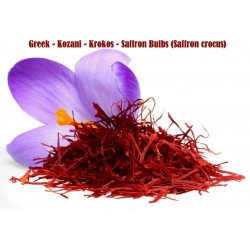
Saffron Bulbs (Saffron crocus)
Fiyat
€3,75
(SKU: MHS 105 B)
Seeds Gallery EU,
5/
5
<!DOCTYPE html>
<html>
<head>
<meta http-equiv="Content-Type" content="text/html; charset=UTF-8" />
</head>
<body>
<h2><span style="font-size: 14pt; font-family: helvetica, arial, sans-serif;"><strong>Saffron Bulbs (Saffron crocus)</strong></span></h2>
<h2><span style="color: #f60303; font-size: 14pt; font-family: helvetica, arial, sans-serif;"><strong>Price for Package of 1 bulb.</strong></span></h2>
<p><span style="color: #000000; font-family: helvetica, arial, sans-serif;">Crocus sativus, commonly known as saffron crocus, or autumn crocus,[2] is a species of flowering plant of the Crocus genus in the Iridaceae family. It is best known for producing the spice saffron from the filaments that grow inside the flower. The term "autumn crocus" is also mistakenly used for flowers in the Colchicum species. However, crocuses have 3 stamens and 1 style, while colchicum have 6 stamens and 3 styles and are toxic.</span></p>
<p><span style="color: #000000; font-family: helvetica, arial, sans-serif;">This cormous autumn-flowering perennial plant species is unknown in the wild.[2] Human cultivation of saffron crocus and use of saffron have taken place for more than 3,500 years and spans different cultures, continents, and civilizations, see history of saffron. Crocus sativus is currently known to grow in the Mediterranean, East Asia, and Irano-Turanian Region.[4] Saffron may be the triploid form of a species found in Eastern Greece, Crocus cartwrightianus; it probably appeared first in Crete. An origin in Western or Central Asia, although often suspected, is not supported by botanical research.[5] Other sources suggest some genetic input from Crocus pallasii.</span></p>
<p><span style="color: #000000; font-family: helvetica, arial, sans-serif;"><strong>Morphology</strong></span></p>
<p><span style="color: #000000; font-family: helvetica, arial, sans-serif;">Crocus sativus has a corm, which holds leaves, bracts, bracteole, and the flowering stalk.[4] These are protected by the corm underground. C. sativus generally blooms with purple flowers in the autumn. The plant grows about 10 to 30 cm high.[7] C. sativus is a triploid with 24 chromosomes, which means it has three times the haploid number of chromosomes. This makes the plant sterile due to its inability to pair chromosomes during meiosis.</span></p>
<p><span style="color: #000000; font-family: helvetica, arial, sans-serif;"><strong>Cultivation</strong></span></p>
<p><span style="color: #000000; font-family: helvetica, arial, sans-serif;">Crocus sativus is unknown in the wild, and its ancestor is unknown. The species Crocus cartwrightianus is the most probable ancestor,[9][6] but C. thomassi and C. pallasii are still being considered as potential predecessors.[10] Manual vegetative multiplication is necessary to produce offspring for this species as the plant itself is a triploid that is self-incompatible and male sterile, therefore rendering it incapable of sexual reproduction. This inability to reproduce on its own supports the hypothesis that C. sativus is a mutant descending from C. carthwrightianus as a result of selective breeding.</span></p>
<p><span style="color: #000000; font-family: helvetica, arial, sans-serif;">Corms of Crocus sativus should be planted 4 inches apart and in a trough 4 inches deep. The flower grows best in areas of full sun in well-drained soil with moderate levels of organic content.[11] The corms will multiply after each year, and will last 3–5 years.</span></p>
<p><span style="color: #000000; font-family: helvetica, arial, sans-serif;"><strong>Use</strong></span></p>
<p><span style="color: #000000; font-family: helvetica, arial, sans-serif;">Saffron is considered to be the most valuable spice by weight. <strong>See spice</strong>. Depending on the size of harvested stigmas, 50,000–75,000 Crocus sativus plants are needed to produce about 1 pound of saffron;[13] each flower only produces three stigmas. Stigmas should be harvested mid-morning when the flowers are fully opened.[12] The saffron crocus (Crocus sativus) should not be confused with "meadow" saffron or autumn crocus (Colchicum autumnale) which is poisonous.</span></p>
<p><span style="color: #000000; font-family: helvetica, arial, sans-serif;"><strong>Spice</strong></span></p>
<p><span style="color: #000000; font-family: helvetica, arial, sans-serif;">Saffron (pronounced /ˈsæfrən/ or /ˈsæfrɒn/)[1] is a spice derived from the flower of Crocus sativus, commonly known as the "saffron crocus". The vivid crimson stigmas and styles, called threads, are collected and dried to be used mainly as a seasoning and colouring agent in food. Saffron, long among the world's most costly spices by weight,[2][3][4] was probably first cultivated in or near Greece.[5] C. sativus is probably a form of C. cartwrightianus, that emerged by human cultivators selectively breeding plants for unusually long stigmas in late Bronze Age Crete.[6] It slowly propagated throughout much of Eurasia and was later brought to parts of North Africa, North America, and Oceania.</span></p>
<p><span style="color: #000000; font-family: helvetica, arial, sans-serif;">Saffron's taste and iodoform or hay-like fragrance result from the chemicals picrocrocin and safranal.[7][8] It also contains a carotenoid pigment, crocin, which imparts a rich golden-yellow hue to dishes and textiles. Its recorded history is attested in a 7th-century BC Assyrian botanical treatise compiled under Ashurbanipal,[9] and it has been traded and used for over four millennia. Iran now accounts for approximately 90% of the world production of saffron.</span></p>
<p><span style="color: #000000; font-family: helvetica, arial, sans-serif;">The domesticated saffron crocus, Crocus sativus, is an autumn-flowering perennial plant unknown in the wild. It probably descends from the eastern Mediterranean autumn-flowering Crocus cartwrightianus,[12][13] which is also known as "wild saffron"[14] and originated in Crete[15] or mainland Greece.[8] An origin in Southwest Asia,[3][16] although often suspected, has been disapproved by botanical research.[17] The saffron crocus probably resulted when C. cartwrightianus was subjected to extensive artificial selection by growers seeking longer stigmas. C. thomasii and C. pallasii are other possible sources.[13][18] As a genetically monomorphic clone,[15] it slowly propagated throughout much of Eurasia.</span></p>
<p><span style="color: #000000; font-family: helvetica, arial, sans-serif;">It is a sterile triploid form, which means that three homologous sets of chromosomes compose each specimen's genetic complement; C. sativus bears eight chromosomal bodies per set, making for 24 in total.[19] Being sterile, the purple flowers of C. sativus fail to produce viable seeds; reproduction hinges on human assistance: clusters of corms, underground, bulb-like, starch-storing organs, must be dug up, divided, and replanted. A corm survives for one season, producing via this vegetative division up to ten "cormlets" that can grow into new plants in the next season.[12] The compact corms are small, brown globules that can measure as large as 5 cm (2 in) in diameter, have a flat base, and are shrouded in a dense mat of parallel fibres; this coat is referred to as the "corm tunic". Corms also bear vertical fibres, thin and net-like, that grow up to 5 cm (2 in) above the plant's neck.[19]</span></p>
<p><span style="color: #000000; font-family: helvetica, arial, sans-serif;">The plant sprouts 5–11 white and non-photosynthetic leaves known as cataphylls. These membrane-like structures cover and protect the crocus's 5 to 11 true leaves as they bud and develop. The latter are thin, straight, and blade-like green foliage leaves, which are 1–3 mm (0.04–0.12 in), in diameter, which either expand after the flowers have opened ("hysteranthous") or do so simultaneously with their blooming ("synanthous"). C. sativus cataphylls are suspected by some to manifest prior to blooming when the plant is irrigated relatively early in the growing season. Its floral axes, or flower-bearing structures, bear bracteoles, or specialised leaves, that sprout from the flower stems; the latter are known as pedicels.[19] After aestivating in spring, the plant sends up its true leaves, each up to 40 cm (16 in) in length. Only in October, after most other flowering plants have released their seeds, do its brilliantly hued flowers develop; they range from a light pastel shade of lilac to a darker and more striated mauve.[20] The flowers possess a sweet, honey-like fragrance. Upon flowering, the plants are 20–30 cm (8–12 in) in height and bear up to four flowers. A three-pronged style 25–30 mm (1.0–1.2 in) in length, emerges from each flower. Each prong terminates with a vivid crimson stigma, which are the distal end of a carpel.</span></p>
<p><span style="color: #000000; font-family: helvetica, arial, sans-serif;"><strong>Cultivation</strong></span></p>
<p><span style="color: #000000; font-family: helvetica, arial, sans-serif;">The saffron crocus, unknown in the wild, probably descends from Crocus cartwrightianus. It is a triploid that is "self-incompatible" and male sterile; it undergoes aberrant meiosis and is hence incapable of independent sexual reproduction—all propagation is by vegetative multiplication via manual "divide-and-set" of a starter clone or by interspecific hybridisation.</span></p>
<p><span style="color: #000000; font-family: helvetica, arial, sans-serif;">Crocus sativus thrives in the Mediterranean maquis, an ecotype superficially resembling the North American chaparral, and similar climates where hot and dry summer breezes sweep semi-arid lands. It can nonetheless survive cold winters, tolerating frosts as low as −10 °C (14 °F) and short periods of snow cover.[12][22] Irrigation is required if grown outside of moist environments such as Kashmir, where annual rainfall averages 1,000–1,500 mm (39–59 in); saffron-growing regions in Greece (500 mm or 20 in annually) and Spain (400 mm or 16 in) are far drier than the main cultivating Iranian regions. What makes this possible is the timing of the local wet seasons; generous spring rains and drier summers are optimal. Rain immediately preceding flowering boosts saffron yields; rainy or cold weather during flowering promotes disease and reduces yields. Persistently damp and hot conditions harm the crops,[23] and rabbits, rats, and birds cause damage by digging up corms. Nematodes, leaf rusts, and corm rot pose other threats. Yet Bacillus subtilis inoculation may provide some benefit to growers by speeding corm growth and increasing stigma biomass yield.</span></p>
<p><span style="color: #000000; font-family: helvetica, arial, sans-serif;">The plants fare poorly in shady conditions; they grow best in full sunlight. Fields that slope towards the sunlight are optimal (i.e., south-sloping in the Northern Hemisphere). Planting is mostly done in June in the Northern Hemisphere, where corms are lodged 7–15 cm (3–6 in) deep; its roots, stems, and leaves can develop between October and February.[19] Planting depth and corm spacing, in concert with climate, are critical factors in determining yields. Mother corms planted deeper yield higher-quality saffron, though form fewer flower buds and daughter corms. Italian growers optimise thread yield by planting 15 cm (6 in) deep and in rows 2–3 cm (0.8–1.2 in) apart; depths of 8–10 cm (3–4 in) optimise flower and corm production. Greek, Moroccan, and Spanish growers employ distinct depths and spacings that suit their locales.</span></p>
<p><span style="color: #000000; font-family: helvetica, arial, sans-serif;">C. sativus prefers friable, loose, low-density, well-watered, and well-drained clay-calcareous soils with high organic content. Traditional raised beds promote good drainage. Soil organic content was historically boosted via application of some 20–30 tonnes (20–30 long tons; 22–33 short tons) of manure per hectare. Afterwards, and with no further manure application, corms were planted.[25] After a period of dormancy through the summer, the corms send up their narrow leaves and begin to bud in early autumn. Only in mid-autumn do they flower. Harvests are by necessity a speedy affair: after blossoming at dawn, flowers quickly wilt as the day passes.[26] All plants bloom within a window of one or two weeks.[27] Stigmas are dried quickly upon extraction and (preferably) sealed in airtight containers.</span></p>
<p><span style="color: #000000; font-family: helvetica, arial, sans-serif;">One freshly picked flower yields an average 30 mg (0.0011 oz) of fresh saffron or 7 mg (0.00025 oz) dried; roughly 150 flowers yield 1 g (0.035 oz) of dry saffron threads; to produce 12 g (0.42 oz) of dried saffron, 1 kg (2.2 lb) of flowers are needed; 1 lb (0.45 kg) yields 0.2 oz (5.7 g) of dried saffron.[25] To glean 1 lb (450 g) of dry saffron requires the harvest of 50,000–75,000 flowers; a kilogram requires 110,000–170,000 flowers.[29][30] Forty hours of labour are needed to pick 150,000 flowers.</span></p>
<p><span style="color: #000000; font-family: helvetica, arial, sans-serif;"><strong>Chemistry</strong></span></p>
<p><span style="color: #000000; font-family: helvetica, arial, sans-serif;">Saffron contains more than 150 volatile and aroma-yielding compounds. It also has many nonvolatile active components,[33] many of which are carotenoids, including zeaxanthin, lycopene, and various α- and β-carotenes. However, saffron's golden yellow-orange colour is primarily the result of α-crocin. This crocin is trans-crocetin di-(β-D-gentiobiosyl) ester; it bears the systematic (IUPAC) name 8,8-diapo-8,8-carotenoic acid. This means that the crocin underlying saffron's aroma is a digentiobiose ester of the carotenoid crocetin.[33] Crocins themselves are a series of hydrophilic carotenoids that are either monoglycosyl or diglycosyl polyene esters of crocetin.[33] Crocetin is a conjugated polyene dicarboxylic acid that is hydrophobic, and thus oil-soluble. When crocetin is esterified with two water-soluble gentiobioses, which are sugars, a product results that is itself water-soluble. The resultant α-crocin is a carotenoid pigment that may comprise more than 10% of dry saffron's mass. The two esterified gentiobioses make α-crocin ideal for colouring water-based and non-fatty foods such as rice dishes.[5]</span></p>
<p><span style="color: #000000; font-family: helvetica, arial, sans-serif;">The bitter glucoside picrocrocin is responsible for saffron's flavour. Picrocrocin (chemical formula: C</span></p>
<p><span style="color: #000000; font-family: helvetica, arial, sans-serif;">16H</span></p>
<p><span style="color: #000000; font-family: helvetica, arial, sans-serif;">26O</span></p>
<p><span style="color: #000000; font-family: helvetica, arial, sans-serif;">7; systematic name: 4-(β-D-glucopyranosyloxy)-2,6,6-trimethylcyclohex-1-ene-1-carboxaldehyde) is a union of an aldehyde sub-molecule known as safranal (systematic name: 2,6,6-trimethylcyclohexa-1,3-diene-1-carboxaldehyde) and a carbohydrate. It has insecticidal and pesticidal properties, and may comprise up to 4% of dry saffron. Picrocrocin is a truncated version of the carotenoid zeaxanthin that is produced via oxidative cleavage, and is the glycoside of the terpene aldehyde safranal.</span></p>
<p><span style="color: #000000; font-family: helvetica, arial, sans-serif;">When saffron is dried after its harvest, the heat, combined with enzymatic action, splits picrocrocin to yield D–glucose and a free safranal molecule.[32] Safranal, a volatile oil, gives saffron much of its distinctive aroma.[7][35] Safranal is less bitter than picrocrocin and may comprise up to 70% of dry saffron's volatile fraction in some samples.[34] A second molecule underlying saffron's aroma is 2-hydroxy-4,4,6-trimethyl-2,5-cyclohexadien-1-one, which produces a scent described as saffron, dried hay-like.[36] Chemists find this is the most powerful contributor to saffron's fragrance, despite its presence in a lesser quantity than safranal.[36] Dry saffron is highly sensitive to fluctuating pH levels, and rapidly breaks down chemically in the presence of light and oxidising agents. It must, therefore, be stored away in air-tight containers to minimise contact with atmospheric oxygen. Saffron is somewhat more resistant to heat.</span></p>
<p><span style="color: #000000; font-family: helvetica, arial, sans-serif;"><strong>Grades and ISO 3632 categories</strong></span></p>
<p><span style="color: #000000; font-family: helvetica, arial, sans-serif;">Saffron is not all of the same quality and strength. Strength is related to several factors including the amount of style picked along with the red stigma. Age of the saffron is also a factor. More style included means the saffron is less strong gram for gram, because the colour and flavour are concentrated in the red stigmas. Saffron from Iran, Spain and Kashmir is classified into various grades according to the relative amounts of red stigma and yellow styles it contains. Grades of Iranian saffron are: "sargol" (red stigma tips only, strongest grade), "pushal" or "pushali" (red stigmas plus some yellow style, lower strength), "bunch" saffron (red stigmas plus large amount of yellow style, presented in a tiny bundle like a miniature wheatsheaf) and "konge" (yellow style only, claimed to have aroma but with very little, if any, colouring potential). Grades of Spanish saffron are "coupé" (the strongest grade, like Iranian sargol), "mancha" (like Iranian pushal), and in order of further decreasing strength "rio", "standard" and "sierra" saffron. The word "mancha" in the Spanish classification can have two meanings: a general grade of saffron or a very high quality Spanish-grown saffron from a specific geographical origin. Real Spanish-grown La Mancha saffron has PDO protected status and this is displayed on the product packaging. Spanish growers fought hard for Protected Status because they felt that imports of Iranian saffron re-packaged in Spain and sold as "Spanish Mancha saffron" were undermining the genuine La Mancha brand. Similar was the case in Kashmir where Imported Iranian saffron is mixed with local saffron and sold as ‘Kashmir brand’ at a higher price[37]. In Kashmir, saffron is mostly classified into two main categories called 'Mongra' (stigma alone) or 'Laccha' (stigmas attached with parts of the style)[38]. Countries producing less saffron do not have specialised words for different grades and may only produce one grade. Artisan producers in Europe and New Zealand have offset their higher labour charges for saffron harvesting by targeting quality, only offering extremely high grade saffron.</span></p>
<p><span style="color: #000000; font-family: helvetica, arial, sans-serif;">In addition to descriptions based on how the saffron is picked, saffron may be categorised under the international standard ISO 3632 after laboratory measurement of crocin (responsible for saffron's colour), picrocrocin (taste), and safranal (fragrance or aroma) content.[39] However, often there is no clear grading information on the product packaging and little of the saffron readily available in UK is labelled with ISO category. This lack of information makes it hard for customers to make informed choices when comparing prices and buying saffron.</span></p>
<p><span style="color: #000000; font-family: helvetica, arial, sans-serif;">Under ISO 3632, determination of non-stigma content ("floral waste content") and other extraneous matter such as inorganic material ("ash") are also key. Grading standards are set by the International Organization for Standardization, a federation of national standards bodies. ISO 3632 deals exclusively with saffron and establishes three categories: III (poorest quality), II, and I (finest quality). Formerly there was also category IV, which was below category III. Samples are assigned categories by gauging the spice's crocin and picrocrocin content, revealed by measurements of specific spectrophotometric absorbance. Safranal is treated slightly differently and rather than there being threshold levels for each category, samples must give a reading of 20–50 for all categories.</span></p>
<p><span style="color: #000000; font-family: helvetica, arial, sans-serif;">These data are measured through spectrophotometry reports at certified testing laboratories worldwide. Higher absorbances imply greater levels of crocin, picrocrocin and safranal, and thus a greater colouring potential and therefore strength per gram. The absorbance reading of crocin is known as the "colouring strength" of that saffron. Saffron's colouring strength can range from lower than 80 (for all category IV saffron) up to 200 or greater (for category I). The world's finest samples (the selected, most red-maroon, tips of stigmas picked from the finest flowers) receive colouring strengths in excess of 250, making such saffron over three times more powerful than category IV saffron. Market prices for saffron types follow directly from these ISO categories. Sargol and coupé saffron would typically fall into ISO 3632 category I. Pushal and mancha would probably be assigned to category II. On many saffron packaging labels, neither the ISO 3632 category nor the colouring strength (the measurement of crocin content) is displayed.</span></p>
<p><span style="color: #000000; font-family: helvetica, arial, sans-serif;">However, many growers, traders, and consumers reject such lab test numbers. Some people prefer a more holistic method of sampling batches of threads for taste, aroma, pliability, and other traits in a fashion similar to that practised by experienced wine tasters.[40] However, ISO 3632 grade and colouring strength information allow consumers to make instant comparisons between the quality of different saffron brands, without needing to purchase and sample the saffron. In particular, consumers can work out value for money based on price per unit of colouring strength rather than price per gram, given the wide possible range of colouring strengths that different kinds of saffron can have.</span></p>
<p><span style="color: #000000; font-family: helvetica, arial, sans-serif;"><strong>Adulteration</strong></span></p>
<p><span style="color: #000000; font-family: helvetica, arial, sans-serif;">Despite attempts at quality control and standardisation, an extensive history of saffron adulteration, particularly among the cheapest grades, continues into modern times. Adulteration was first documented in Europe's Middle Ages, when those found selling adulterated saffron were executed under the Safranschou code.[41] Typical methods include mixing in extraneous substances like beetroot, pomegranate fibres, red-dyed silk fibres, or the saffron crocus's tasteless and odourless yellow stamens. Other methods included dousing saffron fibres with viscid substances like honey or vegetable oil to increase their weight. Powdered saffron is more prone to adulteration, with turmeric, paprika, and other powders used as diluting fillers. Adulteration can also consist of selling mislabelled mixes of different saffron grades. Thus, in India, high-grade Kashmiri saffron is often sold and mixed with cheaper Iranian imports; these mixes are then marketed as pure Kashmiri saffron, a development that has cost Kashmiri growers much of their income.[42][43] Safflower is a common substitute sometimes sold as saffron. The spice is reportedly counterfeited with horse hair, corn silk, or shredded paper. Tartrazine or sunset yellow have been used to colour counterfeit powdered saffron.</span></p>
<p><span style="color: #000000; font-family: helvetica, arial, sans-serif;"><strong>Types</strong></span></p>
<p><span style="color: #000000; font-family: helvetica, arial, sans-serif;">The various saffron crocus cultivars give rise to thread types that are often regionally distributed and characteristically distinct. Varieties (not varieties in the botanical sense) from Spain, including the tradenames "Spanish Superior" and "Creme", are generally mellower in colour, flavour, and aroma; they are graded by government-imposed standards. Italian varieties are slightly more potent than Spanish. The most intense varieties tend to be Iranian. Various "boutique" crops are available from New Zealand, France, Switzerland, England, the United States, and other countries—some of them organically grown. In the US, Pennsylvania Dutch saffron—known for its "earthy" notes—is marketed in small quantities.</span></p>
<p><span style="color: #000000; font-family: helvetica, arial, sans-serif;">Consumers may regard certain cultivars as "premium" quality. The "Aquila" saffron, or zafferano dell'Aquila, is defined by high safranal and crocin content, distinctive thread shape, unusually pungent aroma, and intense colour; it is grown exclusively on eight hectares in the Navelli Valley of Italy's Abruzzo region, near L'Aquila. It was first introduced to Italy by a Dominican monk from Inquisition-era Spain[when?]. But the biggest saffron cultivation in Italy is in San Gavino Monreale, Sardinia, where it is grown on 40 hectares, representing 60% of Italian production; it too has unusually high crocin, picrocrocin, and safranal content. Another is the "Mongra" or "Lacha" saffron of Kashmir (Crocus sativus 'Cashmirianus'), which is among the most difficult for consumers to obtain. Repeated droughts, blights, and crop failures in Kashmir combine with an Indian export ban, contribute to its prohibitive overseas prices. Kashmiri saffron is recognisable by its dark maroon-purple hue; it is among the world's darkest, which hints at strong flavour, aroma, and colouring effect.</span></p>
<p><span style="color: #000000; font-family: helvetica, arial, sans-serif;"><strong>Trade</strong></span></p>
<p><span style="color: #000000; font-family: helvetica, arial, sans-serif;">Almost all saffron grows in a belt from Spain in the west to India in the east. The other continents, except Antarctica, produce smaller amounts. In 2014, 250 t (250,000 kg) were produced worldwide.[47] Iran is responsible for around 90–93% of global production, and much of their produce is exported.[10] A few of Iran's drier eastern and southeastern provinces, including Fars, Kerman, and those in the Khorasan region, glean the bulk of modern global production. In 2005, the second-ranked Greece produced 5.7 t (5,700 kg), while Morocco (the Berber region of Taliouine), and India (Kashmir), tied for third rank, each producing 2.3 t (2,300 kg).</span></p>
<p><span style="color: #000000; font-family: helvetica, arial, sans-serif;">In recent years, Afghan cultivation has risen. Azerbaijan, Morocco, and Italy are, in decreasing order, lesser producers. Prohibitively high labour costs and abundant Iranian imports mean that only select locales continue the tedious harvest in Austria, Germany, and Switzerland—among them the Swiss village of Mund, whose annual output is a few kilograms.[8] Microscale production of saffron can be found in Australia (mainly the state of Tasmania),[48] China, Egypt, parts of England[49] France, Israel, Mexico, New Zealand, Sweden (Gotland), Turkey (mainly around the town of Safranbolu), the United States (California and Pennsylvania), and Central Africa.</span></p>
<p><span style="color: #000000; font-family: helvetica, arial, sans-serif;">Saffron prices at wholesale and retail rates range from US$500 to US$5,000 per pound, or US$1,100–11,000/kg. In Western countries, the average retail price in 1974 was $1,000 per pound, or US$2,200 per kilogram.[3] In February 2013, a retail bottle containing 0.06 ounces could be purchased for $16.26 or the equivalent of $4,336 per pound or as little as about $2,000/pound in larger quantities. A pound contains between 70,000 and 200,000 threads. Vivid crimson colouring, slight moistness, elasticity, and lack of broken-off thread debris are all traits of fresh saffron.</span></p>
<p><span style="color: #000000; font-family: helvetica, arial, sans-serif;"><strong>Uses</strong></span></p>
<p><span style="color: #000000; font-family: helvetica, arial, sans-serif;">Saffron's aroma is often described by connoisseurs as reminiscent of metallic honey with grassy or hay-like notes, while its taste has also been noted as hay-like and sweet. Saffron also contributes a luminous yellow-orange colouring to foods. Saffron is widely used in Persian,[50] Indian, European, and Arab cuisines. Confectioneries and liquors also often include saffron. Saffron is used in dishes ranging from the jewelled rice and khoresh of Iran, [51][52] the Milanese risotto of Italy, the paella of Spain, the bouillabaisse of France, to the biryani with various meat accompaniments in South Asia. One of the most esteemed use for saffron is in the preparation of the Golden Ham, a precious dry-cured ham made with saffron from San Gimignano. Common saffron substitutes include safflower (Carthamus tinctorius, which is often sold as "Portuguese saffron" or "açafrão"), annatto, and turmeric (Curcuma longa).</span></p>
<p><span style="color: #000000; font-family: helvetica, arial, sans-serif;">Saffron has a long history of use in traditional medicine.[53][54] Saffron has also been used as a fabric dye, particularly in China and India, and in perfumery.[55] It is used for religious purposes in India.</span></p>
<p><span style="color: #000000; font-family: helvetica, arial, sans-serif;"><strong>Nutrition</strong></span></p>
<p><span style="color: #000000; font-family: helvetica, arial, sans-serif;">Dried saffron is composed of 12% water, 65% carbohydrates, 6% fat and 11% protein (table).</span></p>
<p><span style="color: #000000; font-family: helvetica, arial, sans-serif;">In comparison to other spices or dried foods, the nutrient content of dried saffron shows richness of nutritional value across B vitamins and dietary minerals (table). In a serving of one tablespoon (2 grams), manganese is present as 28% of the Daily Value while other nutrients are negligible (table).</span></p>
<p><span style="color: #000000; font-family: helvetica, arial, sans-serif;"><strong>Research</strong></span></p>
<p><span style="color: #000000; font-family: helvetica, arial, sans-serif;">One limited meta-analysis concluded that saffron supplementation improved symptoms in patients with major depressive disorders[56] and a review indicated that it helped with mild to moderate depression.</span></p>
<p><span style="color: #000000; font-family: helvetica, arial, sans-serif;"><strong>History</strong></span></p>
<p><span style="color: #000000; font-family: helvetica, arial, sans-serif;">The documented history of saffron cultivation spans more than three millennia.[12] The wild precursor of domesticated saffron crocus is probably Crocus cartwrightianus. If C. sativus is a mutant form of C. cartwrightianus, then it may have emerged by human cultivators selectively breeding specimens for unusually long stigmas in late Bronze Age Crete.[6] It slowly propagated throughout much of Eurasia and was later brought to parts of North Africa, North America, and Oceania.</span></p>
<p><span style="color: #000000; font-family: helvetica, arial, sans-serif;"><strong>Eastern</strong></span></p>
<p><span style="color: #000000; font-family: helvetica, arial, sans-serif;">Saffron was detailed in a 7th-century BC Assyrian botanical reference compiled under Ashurbanipal.[9] Documentation of saffron's use over the span of 3,500 years has been uncovered.[58] Saffron-based pigments have indeed been found in 50,000-year-old depictions of prehistoric places in northwest Iran.[59][60] The Sumerians later used wild-growing saffron in their remedies and magical potions.[61] Saffron was an article of long-distance trade before the Minoan palace culture's 2nd millennium BC peak. Ancient Persians cultivated Persian saffron (Crocus sativus 'Hausknechtii') in Derbena, Isfahan, and Khorasan by the 10th century BC. At such sites, saffron threads were woven into textiles,[59] ritually offered to divinities, and used in dyes, perfumes, medicines, and body washes.[62] Saffron threads would thus be scattered across beds and mixed into hot teas as a curative for bouts of melancholy. Non-Persians also feared the Persians' usage of saffron as a drugging agent and aphrodisiac.[63] During his Asian campaigns, Alexander the Great used Persian saffron in his infusions, rice, and baths as a curative for battle wounds. Alexander's troops imitated the practice from the Persians and brought saffron-bathing to Greece.[64]</span></p>
<p><span style="color: #000000; font-family: helvetica, arial, sans-serif;">Conflicting theories explain saffron's arrival in South Asia. Kashmiri and Chinese accounts date its arrival anywhere between 2500–900 years ago.[65][66][67] Historians studying ancient Persian records date the arrival to sometime prior to 500 BC,[5] attributing it to a Persian transplantation of saffron corms to stock new gardens and parks. Phoenicians then marketed Kashmiri saffron as a dye and a treatment for melancholy. Its use in foods and dyes subsequently spread throughout South Asia. Buddhist monks wear saffron-coloured robes; however, the robes are not dyed with costly saffron but turmeric, a less expensive dye, or jackfruit.[69] Monks' robes are dyed the same colour to show equality with each other, and turmeric or ochre were the cheapest, most readily available dyes. Gamboge is now used to dye the robes.</span></p>
<p><span style="color: #000000; font-family: helvetica, arial, sans-serif;">Some historians believe that saffron came to China with Mongol invaders from Persia.[71] Yet saffron is mentioned in ancient Chinese medical texts, including the forty-volume pharmacopoeia titled Shennong Bencaojing (神農本草經: "Shennong's Great Herbal", also known as Pen Ts'ao or Pun Tsao), a tome dating from 300–200 BC. Traditionally credited to the fabled Yan ("Fire") Emperor (炎帝) Shennong, it discusses 252 phytochemical-based medical treatments for various disorders.[72] Nevertheless, around the 3rd century AD, the Chinese were referring to saffron as having a Kashmiri provenance. According to Chinese herbalist Wan Zhen, "[t]he habitat of saffron is in Kashmir, where people grow it principally to offer it to the Buddha." Wan also reflected on how it was used in his time: "The flower withers after a few days, and then the saffron is obtained. It is valued for its uniform yellow colour. It can be used to aromatise wine."</span></p>
</body>
</html>
MHS 105 B


Soğuğa ve dona dayanıklı bitki
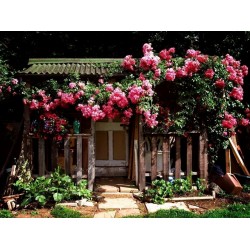
Gül Tohumları Tırmanma Paul...
Fiyat
€2,50
(SKU: F 76)
Seeds Gallery EU,
5/
5
<!DOCTYPE html>
<html>
<head>
<meta http-equiv="Content-Type" content="text/html; charset=UTF-8" />
</head>
<body>
<h2><strong>Gül Tohumları Tırmanma Paul Scarlet Climber</strong></h2>
<h2><span style="color: #ff0000;"><strong>10 tohum paketi için fiyat.</strong></span></h2>
<p>Narin, tatlı kokulu, koyu kırmızı çiçeklerden oluşan değerli bir çeşittir. Sağlıklı, dona ve hastalığa dayanıklı.</p>
<p><strong>WHAT IT LOOKS LIKE</strong>: Flowers of deep, nearly claret red, ca. 8 cm across, semi-double, gathered in large inflorescences; subtly scented. Bloom abundantly from June-July till the end of summer. Leaves rather small, composed of small glossy leaflets. Annual shoots are very long – up to 3-4 m – thin and supple, easy to train over supports.</p>
<p><strong>HOW IT GROWS</strong>: A primitive climber – does not climb over supports but leans on them. The height of the plant depends mainly on the support size, in Poland it reaches 3-4 m. The support needs to be large and sturdy.</p>
<p><strong>WHERE TO PLANT</strong>: Sunny sites. Well-adapted to nearly every type of soil, but does not tolerate compacted, heavy or sandy and droughty ground. Thrives in light, moderately permeable soil of slightly acidic or neutral pH. Frost hardy (zone 6-8).</p>
<p><strong>HOW TO APPLY</strong>: The rose can be planted along natural supports, usually trunks of trees with loose, open crowns which allows a higher growth. The cultivar recommended for various types of parks and gardens, in areas designed both in formal (e.g. by the main entrance) and natural style. It can be planted along trellises, gates, walls and fences as well as by pergolas and arbours. It's flexible and easily follows the support's shape.</p>
</body>
</html>
F 76


Soğuğa ve dona dayanıklı bitki
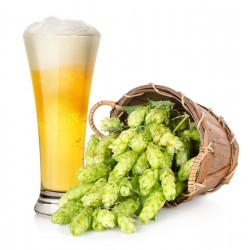
Beer Hops Seeds (Humulus...
Fiyat
€1,85
(SKU: MHS 62)
Seeds Gallery EU,
5/
5
<!DOCTYPE html>
<html>
<head>
<meta http-equiv="Content-Type" content="text/html; charset=UTF-8" />
</head>
<body>
<h2><strong>Beer Hops Seeds (Humulus lupulus) Exotic</strong></h2>
<h2><span style="color: #ff0000;"><strong>Price for Package of 10 seeds.</strong></span></h2>
<p>People find hops exotic and sexy. Perhaps this is because of their close relationship to Cannabis. Aside from being used to flavor beer, Humulus lupulus (Hops) have a long history of herbal use among the Native Americans, mainly because of the soothing, sedative, tonic and calming effect on the body and the mind. Humulus lupulus contains asparagin, a diuretic; antibacterial agents humulone and lupulone; lupulin, a mild sedative/hypnotic. It is believed to be an aphrodisiac for men. Hop flowers were most often used as an infusion, but the flowers were also smoked. The fruit was applied externally as a poultice to ulcers, boils, swellings, etc. The female flowering heads were harvested in the autumn and used fresh or dried. The flowering heads are sprinkled with yellow translucent glands, which appear as a granular substance. Much of the hop's use as a flavoring and medicinal plant depends on the abundance of this powdery substance. The hop plant is a vine. It needs a similar structure for support as a grape plant. Even if you do not grow them for beer they make an excellent ornamental plant. Hardy in zones 4-9. Easy to grow!</p>
<h3><strong>Wikipedia:</strong></h3>
<p>Humulus lupulus (common hop or hop) is a species of flowering plant in the Cannabaceae family, native to Europe, western Asia and North America. It is a dioecious, perennial, herbaceous climbing plant which sends up new shoots in early spring and dies back to a cold-hardy rhizome in autumn. Strictly speaking it is a bine rather than a vine, using its own shoots to act as supports for new growth.</p>
<p> </p>
<p>H. lupulus is a main ingredient of many beers, and as such is widely cultivated for use by the brewing industry (for more information, see the main article on hops). The fragrant flower cones impart bitterness and flavor, and also have preservative qualities.[1] H. lupulus contains myrcene, humulene, xanthohumol, myrcenol, linalool, tannins, and resin.</p>
</body>
</html>
MHS 62


Sırbistan'dan Çeşit

Soğuğa ve dona dayanıklı bitki
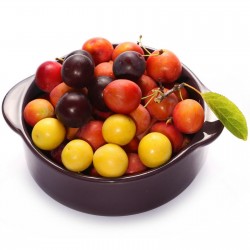
Kiraz eriği tohumlar...
Fiyat
€1,50
(SKU: V 73)
Seeds Gallery EU,
5/
5
<h2 class=""><strong>Kiraz eriği tohumlar (Prunus cerasifera)</strong></h2>
<h2><span style="color: #ff0000;"><strong>10 tohum paketi için fiyat.</strong></span></h2>
<p><strong>Kiraz eriği</strong> (<em>Prunus cerasifera</em>), gülgiller (Rosaceae) familyasından Doğu Avrupa, Güneybatı ve Orta Asya'ya özgü bir ağaç türü.</p>
<h2>Morfolojik özellikleri</h2>
<p>6–15 m'ye kadar boylanabilen küçük ağaç veya büyük çalılardır, kışın dökülen yapraklar 4–6 cm uzunluğundadır. Avrupa'da baharda ilk çiçek açan ağaçlardandır, çoğunlukla Şubat ortasında görülürler. Çiçekler beyaz renkte 5 taç yapraklıdır. Meyve 2–3 cm çapında sarı veya kırmızı renkte sert çekirdeklidir, yenebilir; Ağustos-Eylül arasında olgunlaşır.</p>
<h2>Kullanımı</h2>
<p>Meyvesi lezzetli ve tatlıdır, bazı çeşitleri taze yenebilir, diğerlerinin ekşi olması reçel yapımı için uygundur. Sarı ve kırmızı kiraz eriği, Gürcü mutfağının en önemli malzemelerinden biridir. Bu erikten yapılan ve tkemali denilen sos, birer sulu yemek olan Harço ve Çakapuli'nin hazırlanmasında kullanılır. Öte yandan bu sos şiş kebabına her zaman eşlik eder.</p>
<h2>Peyzajda kullanımı</h2>
<p>Kiraz eriği bahçelerde yetiştirilen popüler bir süs ağacıdır. Pek çok kültivarı<span style="font-size: 14px;"> geliştirilmiştir, bunlardan 'Pissardii' ve 'Nigra' mor yapraklar ve pembe çiçekler için yetiştirilir, meyveler koyu mor renklidir. 'Lindsayae' kültivarının soluk pembe çiçekler ve yeşil yaprakları vardır.</span></p>
<script src="//cdn.public.n1ed.com/G3OMDFLT/widgets.js"></script>
V 73 (3g)


Soğuğa ve dona dayanıklı bitki
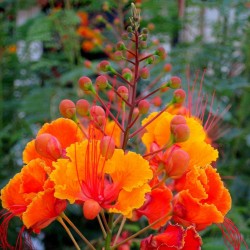
Pride of Barbados Seeds...
Fiyat
€1,85
(SKU: T 1)
Seeds Gallery EU,
5/
5
<meta http-equiv="Content-Type" content="text/html; charset=UTF-8" />
<h2><span style="font-size: 14pt;"><strong>Pride of Barbados Seeds (Caesalpinia pulcherrima)</strong></span></h2>
<h2><span style="color: #ff0000; font-size: 14pt;"><strong>Price for Package of 5 seeds.</strong></span></h2>
<div>Caesalpinia pulcherrima-Desert Bird of Paradise-Also called Poinciana, Peacock flower, Mexican Bird of Paradise and Pride of Barbados. It can grow to 10 feet tall and is easily pruned to shape and size. Flowers have striking orange, red and yellow petals. It is found throughout tropical and sub-tropical America. It is used to attract hummingbirds. The seeds and other parts of the plant are poisonous if eaten. It thrives in zones 8 through 11. Mulch roots to protect through frosts. If frost causes damage prune back and it will come back next year. </div>
<table cellspacing="0" cellpadding="0" border="1">
<tbody>
<tr>
<td colspan="2" width="100%" valign="top">
<p><span style="color: #008000;"><strong>Sowing Instructions</strong></span></p>
</td>
</tr>
<tr>
<td valign="top" nowrap="nowrap">
<p><span style="color: #008000;"><strong>Propagation:</strong></span></p>
</td>
<td valign="top">
<p><span style="color: #008000;">Seeds</span></p>
</td>
</tr>
<tr>
<td valign="top" nowrap="nowrap">
<p><span style="color: #008000;"><strong>Pretreat:</strong></span></p>
</td>
<td valign="top">
<p><span style="color: #008000;">scarify / roughen, pour hot water over the seeds (no boiling water) + soak 24 h</span></p>
</td>
</tr>
<tr>
<td valign="top" nowrap="nowrap">
<p><span style="color: #008000;"><strong>Stratification:</strong></span></p>
</td>
<td valign="top">
<p><span style="color: #008000;">0</span></p>
</td>
</tr>
<tr>
<td valign="top" nowrap="nowrap">
<p><span style="color: #008000;"><strong>Sowing Time:</strong></span></p>
</td>
<td valign="top">
<p><span style="color: #008000;">all year round> preferred spring</span></p>
</td>
</tr>
<tr>
<td valign="top" nowrap="nowrap">
<p><span style="color: #008000;"><strong>Sowing Depth:</strong></span></p>
</td>
<td valign="top">
<p><span style="color: #008000;">1 cm</span></p>
</td>
</tr>
<tr>
<td valign="top" nowrap="nowrap">
<p><span style="color: #008000;"><strong>Sowing Mix:</strong></span></p>
</td>
<td valign="top">
<p><span style="color: #008000;">Coir or sowing mix + sand or perlite</span></p>
</td>
</tr>
<tr>
<td valign="top" nowrap="nowrap">
<p><span style="color: #008000;"><strong>Germination temperature:</strong></span></p>
</td>
<td valign="top">
<p><span style="color: #008000;">25 ° C </span></p>
</td>
</tr>
<tr>
<td valign="top" nowrap="nowrap">
<p><span style="color: #008000;"><strong>Location:</strong></span></p>
</td>
<td valign="top">
<p><span style="color: #008000;">bright + keep constantly moist not wet</span></p>
</td>
</tr>
<tr>
<td valign="top" nowrap="nowrap">
<p><span style="color: #008000;"><strong>Germination Time:</strong></span></p>
</td>
<td valign="top">
<p><span style="color: #008000;">2-4 weeks</span></p>
</td>
</tr>
<tr>
<td valign="top" nowrap="nowrap">
<p><span style="color: #008000;"><strong>Watering:</strong></span></p>
</td>
<td valign="top">
<p><span style="color: #008000;">Water regularly during the growing season</span></p>
</td>
</tr>
<tr>
<td valign="top" nowrap="nowrap">
<p><span style="color: #008000;"><strong> </strong></span></p>
</td>
<td valign="top">
<p><br /><span style="color: #008000;"><em>Copyright © 2012 Seeds Gallery - Saatgut Galerie - Galerija semena. </em><em>All Rights Reserved.</em><em></em></span></p>
<div><span style="color: #008000;"><em> </em></span></div>
</td>
</tr>
</tbody>
</table>
T 1 (5 S)


Soğuğa ve dona dayanıklı bitki

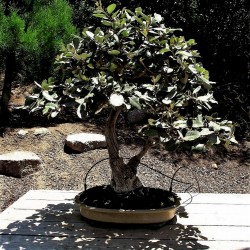
Amerikan Gümüş Üzümü tohumu...
Fiyat
€2,25
(SKU: T 39 EC)
Seeds Gallery EU,
5/
5
<!DOCTYPE html>
<html>
<head>
<meta http-equiv="Content-Type" content="text/html; charset=UTF-8" />
</head>
<body>
<h2><strong>Amerikan Gümüş Üzümü tohumu (Elaeagnus commutata)</strong></h2>
<h2><span style="color: #ff0000;"><strong>5 tohum paketi için fiyat.</strong></span></h2>
<p><i><b>Elaeagnus commutata</b></i><span> </span>(<b>Amerikan Gümüş Üzümü</b>, '<b>Amerikan Gümüş İğdesi'</b><span> </span>ya da<span> </span><b>Wolf-willow</b><span> </span>olarak da adlandırılır),<span> </span><i>Elaeagnus</i><span> </span>ailesinin bir türüdür ve doğu kuzey Amerika,Güney Alaska,Kanada'nın İngiliz Kolombiyası eyaletinden ABD'nin Utah,Mettesota,Güney Dakota gibi eyaletkerinde kadar pek çok yerde yetişebilmektedir.<sup id="cite_ref-grin_1-0" class="reference">[1]</sup><span> </span>Kumlu taşlık alanlar,orman alanlarının kenarları,kuru bölgelerden ıslak bölgelere kadar her toprakta tıpkı diğer iğde türleri gibi gelişebilir.<sup id="cite_ref-bc_2-0" class="reference">[2]</sup></p>
<p>1–4 m uzunluğunda bir ağaç veya büyük bir çalı şeklinde durur. Yaprakları geniş ve mızraksıdır, 2–7 cm uzunluğunda, küçük beyaz yoğun kabukumsu bir doku ile kaplı gümüş rengindedir.Çiçekleri<span> </span>sarımsı, 6–14 mm uzunluğunda taç yapraklarla kaplıdır ve kokuludur.<span> </span>Meyvesi<span> </span>9–12 mm uzunluğunda oval ve sarkık haldedir.Gümüşümsü pullarla kapludur. Meyve çekirdeğini saran unumsu,pofuduk bir yüzey meyvenin etsi kısmını oluşturur.<sup id="cite_ref-bc_2-1" class="reference">[2]</sup><span> </span>Meyveleri yenilebilir.</p>
<p>Gümüşümsü yeşilliği nedeniyle süs bitkisi olarak yetiştirilebilmektedir.</p>
</body>
</html>
T 39 EC


Soğuğa ve dona dayanıklı bitki
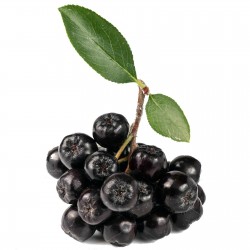
1000 tohumlar Aronia nero...
Fiyat
€11,00
(SKU: V 29 (4g))
Seeds Gallery EU,
5/
5
<h2><strong>1000 tohumlar Aronia nero (Aronia melanocarpa)</strong></h2>
<h2><span style="color: #ff0000;"><strong>1000 tohum paketi için fiyat.</strong></span></h2>
<p>Blueberry ve yaban mersininden 3 kat daha fazla anti oksidan barındıran meyveleri, koyu mor-kırmızı renklidir. Sonbaharda hasatı yapılır. Çiğ ve pişmiş olarak tüketilebilen meyvele.</p>
<p>tüketilebilen meyvelerinden reçel, tatlı, kek ve komposto yapılabilir.</p>
<p>Budaması Şubat ve Mart aylarında yapılır. Her yıl gelişmiş bitkilerin her 3 yaşlı dalından biri alınarak gençleştirme yapılır.</p>
<p>Ortalama 2 metre boy ve en yapan aronia nero -20 dereceye kadar soğuklara dayanıklıdır.</p>
<p>Aronia viking ve nero arasında ki fark bitkinin boyundadır. Viking daha boylu ortalama 2.5 metreye kadar, nero ise 2 metreye kadar boylanır. Her iki çeşidin de olgunlaşması ve hasadı aynı dönemdedir. Her iki bitki de mükemmel çit bitkisi olup, peyzaj amaçlıda kullanıma uygundur.</p>
<p>Dikim Yeri: güneşli ve yarı gölge<br>Önerilen: bahçe yetiştiriciliğine uygundur<br>Toprak: nemli, geçirgenliği yüksek toprak sever<br>Büyüme Hızı: hızlı<br>Çiçeklenme Dönemi: bahar döneminde beyaz çiçekler açar<br>Bitkinin Maks. Eni: 2.5 metre<br>Bitkinin Maks. Boyu: 2 metre<br>Dona Dayanıklılık: tam dayanıklı<br>İklim Kuşağı: 4-9</p>
<p>Bakım: Düzenli sulama ister. İlk sezon yaz aylarında bitki tutunana dek susuz bırakmayınız.</p><script src="//cdn.public.n1ed.com/G3OMDFLT/widgets.js"></script>
V 29 (4g)


Soğuğa ve dona dayanıklı bitki
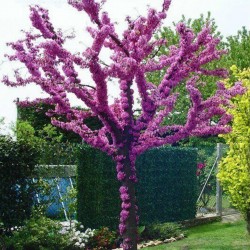
Tohumlar Erguvan (Cercis...
Fiyat
€1,95
(SKU: T 9)
Seeds Gallery EU,
5/
5
<meta http-equiv="Content-Type" content="text/html; charset=UTF-8" />
<h2 id="short_description_content" class="rte align_justify"><strong>Tohumlar Erguvan (Cercis siliquastrum)</strong></h2>
<h2 class="rte align_justify"><span style="color: #ff0000;"><strong>10, 20, 50 tohum paketi için fiyat.</strong></span></h2>
<p><b>Erguvan</b><span> </span>(<i>Cercis siliquastrum</i>),<span> </span>baklagiller<span> </span>(<i>Fabaceae</i>) familyasından, 10 metreye kadar boylanabilen, tek gövdeli, yaprak döken, çalı görünümünde bir<span> </span>ağaççıktır.<sup id="cite_ref-1" class="reference"></sup></p>
<p>Yapraklar<span> </span>karşılıklı, basit, dairemsi 7–12 cm kadardır. Dip kısmı kalp şeklinde, ucu yuvarlak, kenarlar tamdır. Gençken kırmızımsı-mor daha sonra mavi-yeşile döner. Yüzeyi dalgalı düşmeden önce sarıdır. Çiçekler 1,5–2 cm uzunluğunda kırmızı-mor 3-6 tanesi bir arada bulunur.<span> </span>Meyve<span> </span>legümen (fasulye<span> </span>biçiminde) olup, 7–10 cm uzunluğundadır. Diğer bir önemli özelliği de toprağa<span> </span>azot<span> </span>bağlamasıdır.</p>
<p>Erguvan meyveleri fasulye görünümünde, 9–10 cm. uzun, 2–5 cm. geniş, kızılsı kahve renginde, karın çizgisinde dar ve uzunca kanat bulunur. Tohumu boldur. Sonbaharda olgunlaşan meyve kış boyunca bitki üzerinde kalır. Nisan-Mayıs ayında açan çiçekleri hermafrodit olup yapraklanmadan önce açarlar. Uzun saplı olan çiçekler 3-8 çiçekli salkım kuruluşunda ve erguvan kırmızısı rengi ile çok dekoratiftir.</p>
<p>Işık ağacıdır. Kışın donlardan bazen etkilenir.<sup id="cite_ref-2" class="reference">[2]</sup><span> </span>Anavatanı Güney<span> </span>Avrupa<span> </span>ve Batı<span> </span>Asya'dır.<span> </span>Türkiye'de<span> </span>Ege<span> </span>ve<span> </span>Marmara Bölgesi'nde yayılmıştır.<span> </span>Tohum<span> </span>ve<span> </span>çelikle<span> </span>üretilir. Tohumlarda kabuk sertliğinden kaynaklanan çimlenme engeli vardır. Tohumlar 2-3 dakika sıcak su ve 24 saat ılık suda bırakıldıktan sonra<span> </span>ilkbaharda<span> </span>ekilir. Çelikle üretim Temmuz-Ağustos aylarında alınan yarı odunsu çeliklerle yapılır.<sup id="cite_ref-3" class="reference">[3]</sup></p>
<p>Erguvan, yapraklanmadan önce Nisan ayı sonuyla Mayıs ayı başında yalnızca birkaç haftalığına baharın müjdecisi kabul edilen morumsu pembe renkte çiçekler açar. Bazı<span> </span>Hristiyan<span> </span>inanışlarına göre<span> </span>İsa'nın ihanet eden havarisi<span> </span>Yahuda<span> </span>kendini bu ağaca asmıştır. Efsaneye göre bu olaydan sonra önceleri beyaz olan erguvan çiçekleri utançtan ya da kandan kırmızıya dönmüştür. Yazın sap kısmından girintili yuvarlak yaprakları olur. Sonbaharda ise fasulye benzeri tohumlar bırakır. Erguvan çiçeği havaların güzel gitmesi durumunda bazı sonbaharlarda da açar.</p>
<h2><span id="Erguvan.27a_atfedilen_anlamlar_ve_tarihteki_yeri"></span><span class="mw-headline" id="Erguvan'a_atfedilen_anlamlar_ve_tarihteki_yeri">Erguvan'a atfedilen anlamlar ve tarihteki yeri</span></h2>
<p>Erguvan,<span> </span>İstanbul'u, özellikle de<span> </span>İstanbul boğazını<span> </span>bahar aylarında kendine has mor rengine büründürür.<span> </span>Bizans<span> </span>ve Hıristiyanlığın önemli imgelerindendir. Erguvan moru Bizans hükümdarlarının kıyafetlerinde kullanılan bir renktir. Doğal yollarla üretilen en zor renk olduğu için, bir zenginlik ve güç belirtisiydi; imparator dışında hiç kimse mor pelerin takamazdı.<sup id="cite_ref-4" class="reference">[4]</sup></p>
<p>Erguvan, yüzyıllar boyu<span> </span>Bursa<span> </span>şehrinin de simgesi olmuştur. Osmanlı Sultanı<span> </span>Yıldırım Bayezit'in damadı Anadolu erenlerinden<span> </span>Emir Sultan'ın her yıl erguvan açma mevsiminde<span> </span>Bursa'da müritleriyle buluşması nedeniyle 14. yüzyıldan itibaren düzenlemeye başlanan erguvan şenlikleri, şehrin ekonomisine olumlu etkilerinden dolayı 19. yüzyıla kadar gelenek olarak sürdürülmüştür; günümüzde bu şenlikleri yeniden canlandırma çabası vardır.</p>
T 9 (10 S)


Sırbistan'dan Çeşit

Soğuğa ve dona dayanıklı bitki
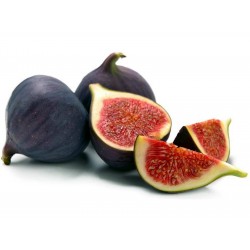
Tohumlar İncir (Ficus carica)
Fiyat
€1,95
(SKU: V 19 CF)
Seeds Gallery EU,
5/
5
<!DOCTYPE html>
<html>
<head>
<meta http-equiv="Content-Type" content="text/html; charset=UTF-8" />
</head>
<body>
<h2><strong>Tohumlar İncir (Ficus carica)</strong></h2>
<h2><span style="color: #ff0000;"><strong>100 (0.05g) tohum paketi için fiyat.</strong></span></h2>
<p><b>İncir</b><span> </span>(<i>Ficus carica</i>), anavatanı doğu<span> </span>Akdeniz<span> </span>ve güneybatı<span> </span>Asya<span> </span>(Türkiye'den<span> </span>Afganistan'a kadar) olan,<span> </span>ağaç<span> </span>ya da<span> </span>ağaççık<span> </span>nitelikli bir<span> </span>bitki<span> </span>türü<span> </span>ve bu türün<span> </span>meyvesidir.</p>
<p>İncir,<span> </span>dutgiller<span> </span>(Moraceae)<span> </span>familyasına<span> </span>dahil olan<span> </span><b>incir</b><span> </span><i>(Ficus)</i><span> </span>cinsinin<span> </span>içerdiği yaklaşık 800 kadar tür içinde ticari öneme sahip<span> </span>meyve<span> </span>veren tek bitkidir. Dişi ve erkek olarak ağaçları ikiye ayrılır, aynı ağaç üstünde hem dişi hem de erkek nitelikli organlar bulunmaz. Dişi ağaçların meyvesi büyük ve fazladır, erkek ağaçların ise ufak ve az meyvesi bulunmakla meyvesi dişilerininki gibi yenilebilir lezzette de değildir ancak tozlaşma için gereklidir. Genelde tozlaşma için pek çok dişi ağacın yakınına sadece bir tane erkek ağaç dikilir. İncir bitkisinin çiçeklerinde<span> </span>tozlaşma<span> </span>olayı mazı böcekleriyle gerçekleşir. Bu olaya "<i>Kaprifikasyon</i>" denir.</p>
<p>Meyvelerinin<span> </span>besin değeri yüksektir. Meyvelerin bileşimini %30-40<span> </span>şeker, A,B,C vitaminleri oluşturmaktadır.</p>
<p>2005 yılı<span> </span>FAO<span> </span>verilerine göre Dünya'da 1.057.000-Ton incir üreilmiş olup, incirin Dünya'daki en büyük üreticisi 280.000 ton ile<span> </span>Türkiye'dir. Bunu 170.000-Ton ile<span> </span>Mısır<span> </span>ve diğer Akdeniz ülkeleri takip etmektedir. Başlıca dış satım ürünümüzdür. Ege bölgesinde tarımda ön planda yer alır. Türkiye'de en fazla<span> </span>Aydın<span> </span>yöresinde yetiştirilir.</p>
</body>
</html>
V 19 CF (0,05g)


Soğuğa ve dona dayanıklı bitki
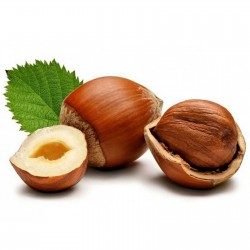
Adi fındık tohumlar...
Fiyat
€1,55
(SKU: V 107)
Seeds Gallery EU,
5/
5
<h2 style="font-family: 'Helvetica Neue', Helvetica, Arial, sans-serif; color: #333333;"><strong>Adi fındık tohumlar (Corylus avellana)</strong></h2>
<h2 style="font-family: 'Helvetica Neue', Helvetica, Arial, sans-serif; color: #333333;"><span style="color: #ff0000;"><strong>5 veya 10 tohum paketi için fiyat.</strong></span></h2>
<p><strong>Adi fındık</strong> (Corylus avellana), huşgiller (Betulaceae) familyasından Avrupa ve Anadolu'da doğal olarak yetişen çok yıllık çalı (ağaççık)türü. Ortalama 3 m, en fazla 5 m kadar uzunluğa sahiptir. Gövde çapı 15–18 cm, ortalama ömrü 80-100 yıldır.</p>
<p>Ilıman nemli iklim alanlarda yetişen bitki yarı gölgelik alanlara dayanıklıdır. 10 m'den 1700 m'ye kadar yüksekliklerde görülür. Birden çok gövde yapan çalı şekilli bitki, kış mevsiminde yapraklarını döker. Genç sürgünler sarımtırak-gri, yaşlı dallar gri-kahverengidir. Sonbaharda olgunlaşan meyveleri 1,5–2 cm boyutunda ve yumurta biçimlidir.<sup></sup></p>
<p>Adi fındıkta; çiçeklenme zamanı; Şubat-15 Nisan, olgunlaşma zamanı; Ağustos, Eylül ayları, toplanma zamanı; Eylül-Ekim ayları, ilk tohum tutma yaşı; 10. yıl, bol tohum yılı tekrarı 2 yılda birdir<sup></sup>. 1000 adi fındık tanesi 800-1700 gr (ortalama 1250gr) ağırlığındadır. Çimlenmede %60-75 oranında başarı sağlanır.</p>
<p>Ağacın odunlarından fıçı, sandalye ve sepet yapımında yararlanılır. Kömüründen kara barut ve resim kömürü yapılır</p><script src="//cdn.public.n1ed.com/G3OMDFLT/widgets.js"></script>
V 107 (5 NS)





